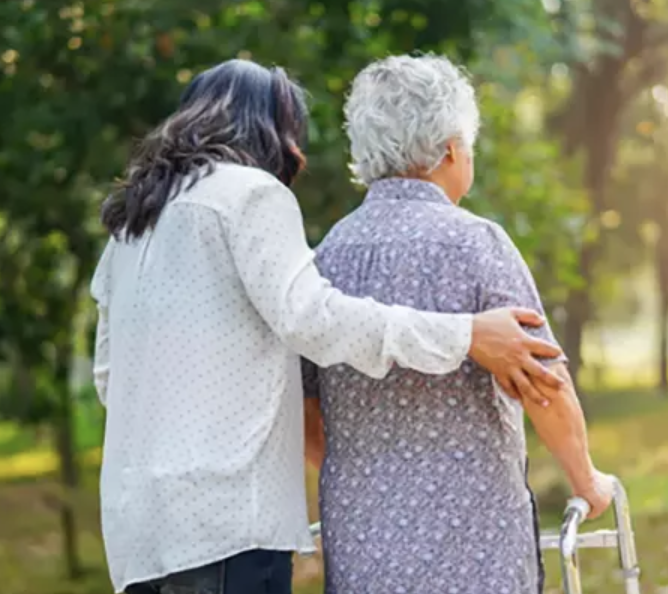
Tuberculosis, commonly known as TB, is an age-old infectious disease that still casts its shadow on millions of lives across the globe. This bacterial infection primarily targets the lungs, and its insidious nature makes it one of the world's deadliest diseases. In this article, we will explore tuberculosis, its origins, symptoms, and the importance of early detection and treatment.
Tuberculosis (TB), caused by Mycobacterium tuberculosis, is a contagious bacterial infection primarily affecting the lungs but can impact other organs. This article delves into the nuances of TB, elucidating its symptoms, the importance of early detection and treatment, and preventive measures to combat its spread.
Common symptoms of TB:
Find YOUR ideal care home NOW!
TB symptoms may be subtle initially but commonly include:
1. Persistent cough: Lasting more than three weeks.
2. Chest pain: Discomfort, exacerbated by deep breaths or coughing.
3. Coughing up blood: Hemoptysis, indicative of advanced disease.
4. Fatigue: Persistent tiredness and weakness.
5. Unintended weight loss: Noticeable loss without an apparent cause.
Importance of early detection and treatment:
Early diagnosis is paramount to curbing TB's spread and ensuring timely intervention. Diagnostic tests like chest X-rays and sputum analysis confirm TB presence. Treatment involves a prolonged course of antibiotics to prevent drug-resistant strains.
Preventive measures:
Preventing TB transmission entails:
1. Vaccination: Bacillus Calmette-Guérin (BCG) vaccine administration in some regions.
2. Good respiratory hygiene: Covering mouth and nose when coughing or sneezing.
3. Infection control: Healthcare workers must adhere to infection control protocols.
Preventive Measures for Tuberculosis (TB)
| Preventive Measure | Description |
|---|---|
| Vaccination | Administration of the Bacillus Calmette-Guérin (BCG) vaccine in regions where TB is prevalent. |
| Good Respiratory Hygiene | Covering mouth and nose when coughing or sneezing to prevent airborne transmission. |
| Infection Control | Healthcare workers must follow strict infection control protocols to minimize the risk of spreading TB. |
TB poses a significant health threat, but with awareness, early detection, and treatment, its impact can be mitigated. Understanding symptoms, coupled with proactive preventive measures, empowers individuals to safeguard themselves and their communities against TB's persistent threat. By combating TB, we advance towards a world where this ancient disease no longer holds dominion.
FAQ:
What is Tuberculosis (TB)?
Tuberculosis (TB) is a contagious bacterial infection caused by Mycobacterium tuberculosis, primarily affecting the lungs, but it can also spread to other organs in the body.
What are the common symptoms of TB?
Common symptoms of TB include a persistent cough lasting more than three weeks, chest pain, coughing up blood, fatigue, and unintended weight loss.
How is TB diagnosed?
TB is diagnosed through diagnostic tests such as chest X-rays and sputum analysis, which help confirm the presence of the bacteria.
What causes TB?
TB is caused by Mycobacterium tuberculosis, a bacteria that primarily infects the lungs but can also affect other organs in the body. It is spread through the air when an infected person coughs or sneezes.
How is TB treated?
Treatment for TB involves a prolonged course of antibiotics, typically lasting 6 to 9 months. It is important to complete the full course to prevent drug-resistant strains from developing.
What are the preventive measures for TB?
Preventive measures include vaccination with the BCG vaccine in certain regions, practicing good respiratory hygiene, and following infection control protocols, especially in healthcare settings.
Can TB be cured?
Yes, TB can be cured with the appropriate use of antibiotics. Early detection and timely treatment are essential to achieving a full recovery.
How can TB spread?
TB spreads through the air when an infected person coughs, sneezes, or talks, releasing the bacteria into the air, where it can be inhaled by others.
What is the BCG vaccine?
The Bacillus Calmette-Guérin (BCG) vaccine is a vaccine primarily used to prevent tuberculosis, especially in children in countries where TB is common.
Who is most at risk for TB?
Individuals with weakened immune systems, such as those with HIV, healthcare workers, and individuals living in crowded conditions or areas with a high prevalence of TB, are at greater risk for contracting TB.
For assistance in selecting a care home or facility tailored to your needs, please contact us at 0230 608 0055 or complete our online form.
Do you need a care home for yourself or your loved one?
Share this article :
Latest posts
You are looking for an establishment for your loved one ?
Get availability & prices
Fill in this form and receive
all the essential information
We would like to inform you of the existence of the opposition list for telephone canvassing.











